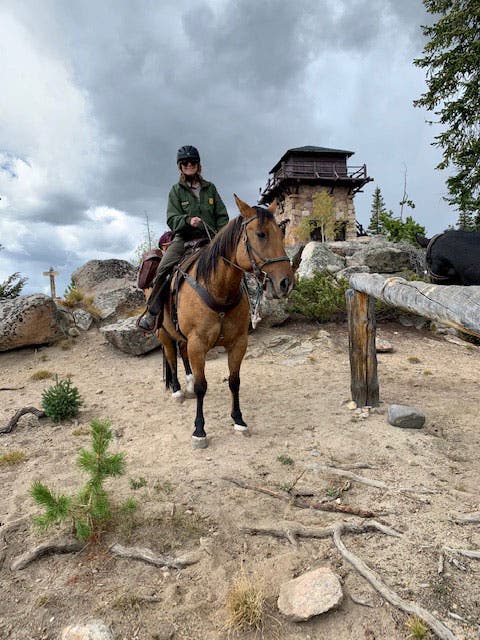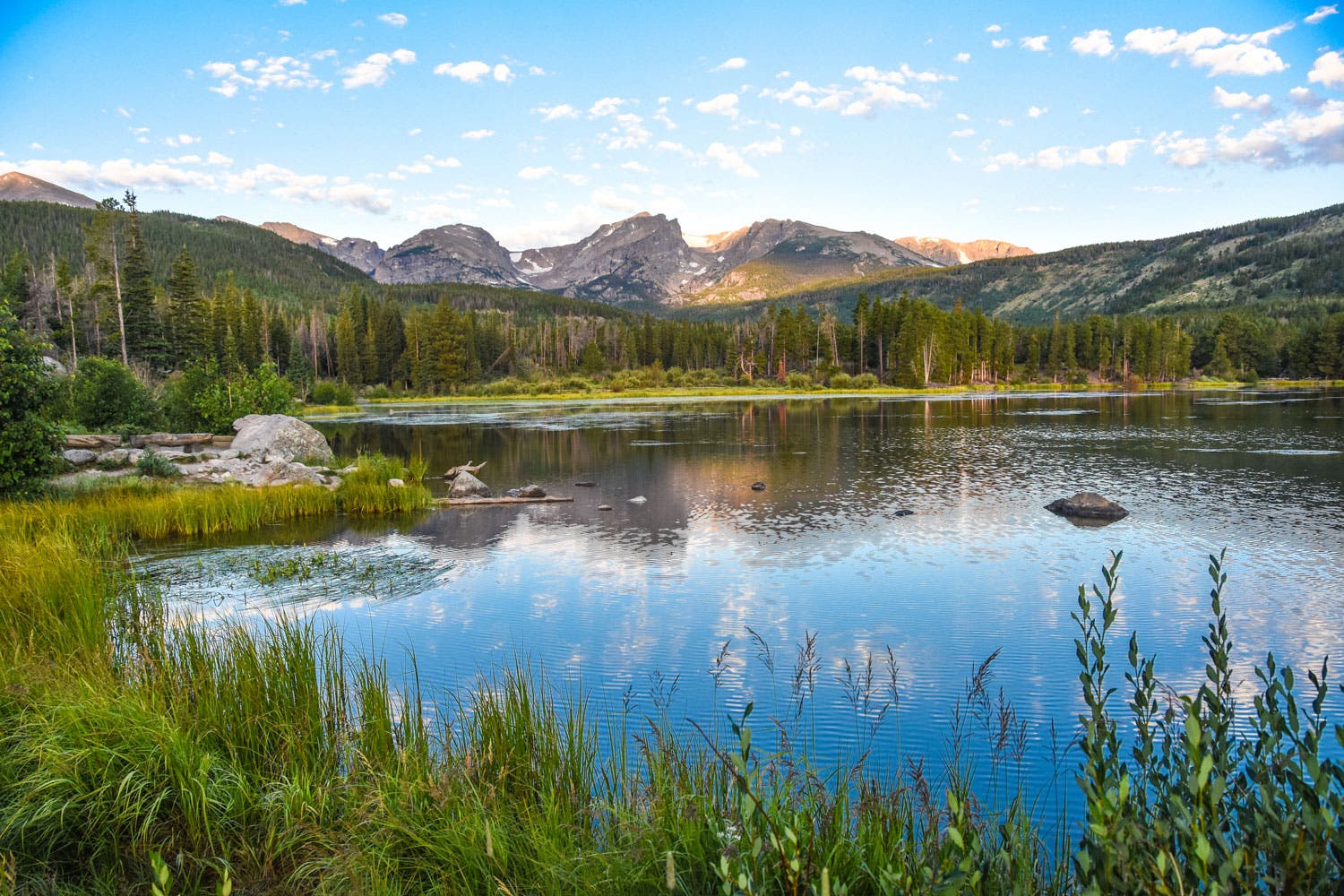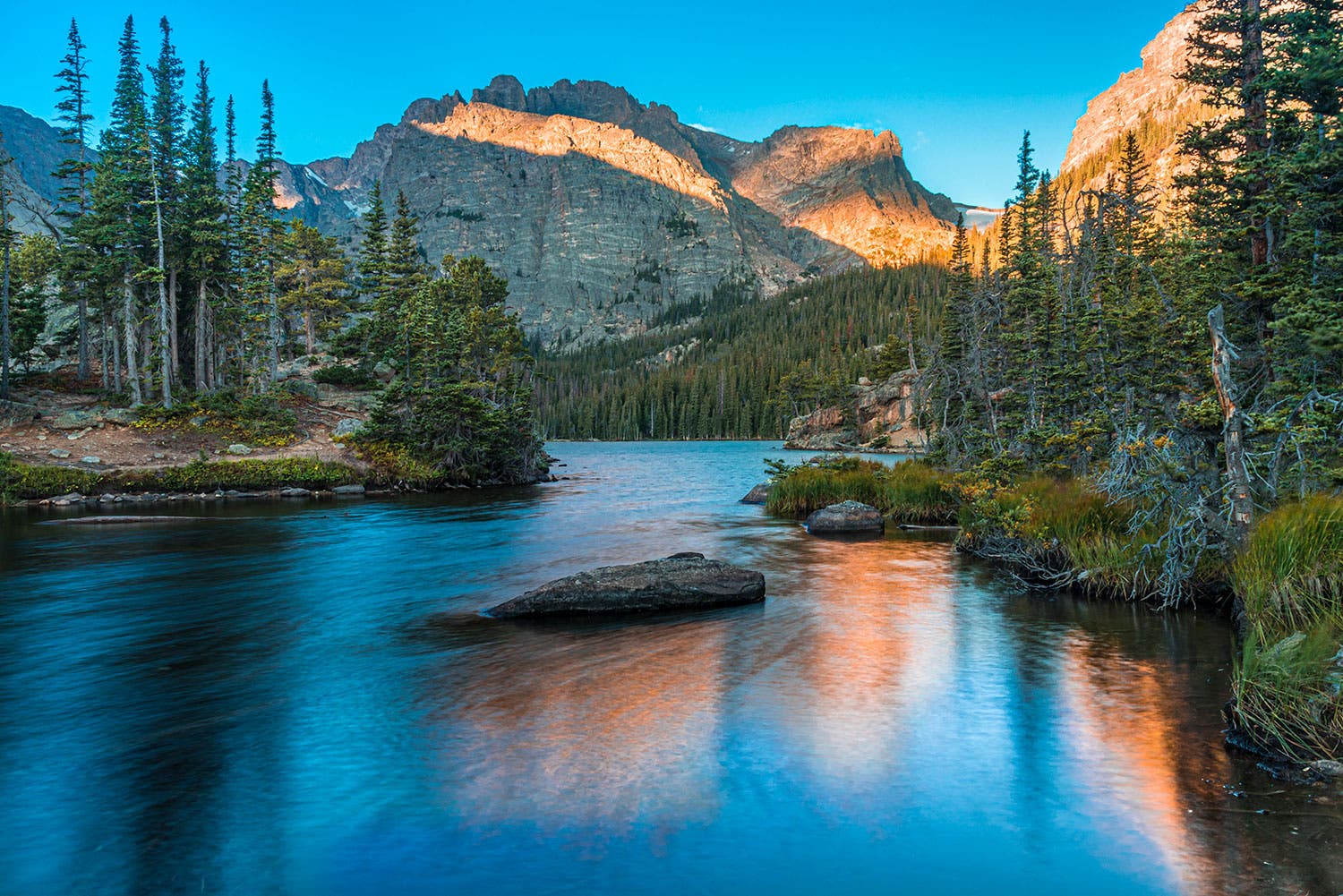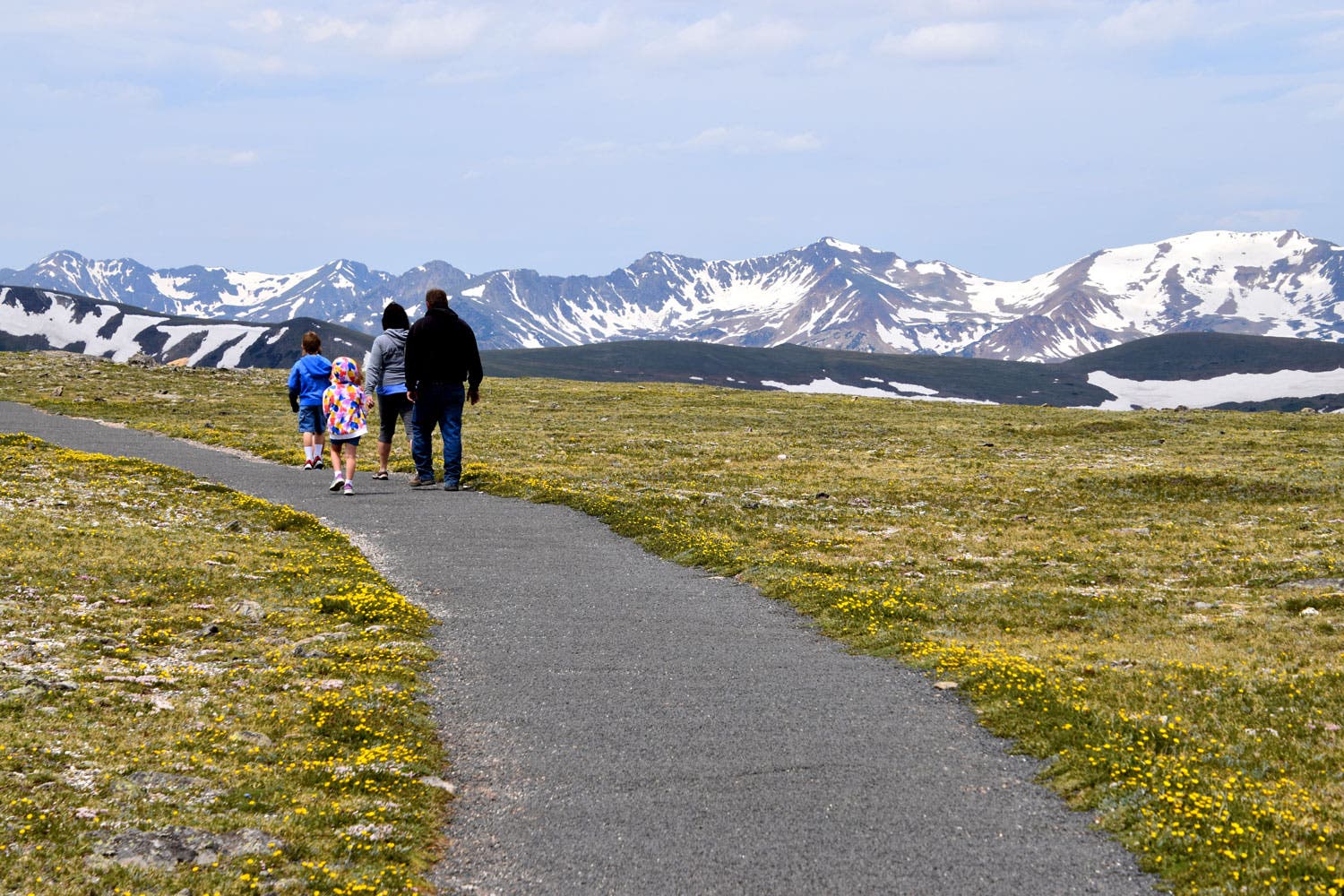How to Save Rocky Mountain National Park From Its Growing Popularity

Darla Sidles, Superintendent of Rocky Mountain National Park (Photo: NPS)

It’s been a wild couple of years for Darla Sidles, the superintendent of Rocky Mountain National Park in Colorado. In her first 18 months, the park had experienced record levels of visitors. It shuttered its entrances temporarily in spring 2020 as the global pandemic forced many national park sites to rethink how to open its doors and keep its staff and visitors as safe as possible. Then, Rocky Mountain shuttered them again in late fall when two of Colorado’s largest-ever fires ripped through the park and burned 10% — the equivalent of a whopping 30,000 acres — of the park.
Today, Sidles, who became the first female superintendent of the park in 2016, has launched an innovative and sometimes controversial day-use reservation system to address the tremendous increase in visitors to the park. Her park was the first in the nation to launch a timed-entry day use pass in 2020, hoping to better manage park crowds during the pandemic. A modified version of it is back for 2022. If you want to visit the park between May 27 and Oct. 10, 2022, you’ll need a special timed-entry pass.
“Even with being shut down for COVID, two significant fires last year and implementing timed-entry passes, we were the fourth most visited park in 2020, so day-use issues are not going away,” she says, noting since 2012, Rocky Mountain National Park has seen a 46% increase in visitors. And people just keep coming with 3.3 million visitors in 2020 alone.
Great Smoky Mountains National Park led the nation with 12.1 million visitors in 2020, followed by Yellowstone with 3.8 million and Zion with 3.6 million.
What Is a Timed-Entry Pass for Rocky Mountain National Park?
So, what’s a timed-entry day pass and why does the park offer two different passes? If you want to visit the Bear Lake Road Corridor of Rocky Mountain National Park in summer 2022, you need to purchase a ticket in advance on recreation.gov. Reservations go on sale at 10 a,m. MDT on Saturday, May 2 for park entry between May 27-June 30. On June 1, you can reserve any days for the month of July, and July 1 will be when you can book for August and so on. And those tickets will be flying off the virtual shelves. If the park has sold out for the day you want to visit, you can enter the Bear Lake Road Corridor area before 5 a.m. or after 6 p.m.
If you want to avoid the popular Bear Lake Road Corridor altogether, you can buy a separate timed entry pass to explore the rest of the park. Or you can enter the park before 9 a.m. or after 3 p.m. The park has left some openings for people to purchase reservation tickets at 5 p.m. the day prior to entering the park. (Download PDF map)
“It’s a cultural shift from 20 years ago when people could go anywhere at any time and not pre-plan,” Sidles acknowledges.
But those days are long gone, even without a reservation system. From 2016 to 2019, Sidles points out, the park restricted access when the parking lots filled up at Bear Lake, a popular destination for visitors. There was no sense in letting people into the Bear Lake Road area only to get frustrated that there were no parking spots available.
“The new system does reward people who do plan,” Sidles says. “You can stay all day once you enter. And at least you have a guarantee that you can get into the park.”

For those like myself who tend to travel by the seat of my pants, it’s been increasingly difficult, maddeningly so, to do last-minute getaways to the parks. And the writing on the wall has been up for quite some time. We’ve waited in long lines to get into Arches during the past 10 years, reminiscing about the late 1990s when we cruised through the entrance station, regardless of the season.
We drove for hours in Yellowstone in search of an open campground spot only to find one at midnight on National Forest Service land up a mountain outside of Gardiner, Mont. We drove to the South Rim of the Grand Canyon only to nab the last campsite left at Mather Campground. We were lucky that time. But those lucky moments are increasingly rare. And despite myself, I have started meticulously planning national park adventures months in advance.
Sidles points to the popular day-hiking spot in the adjacent national forest about 45 minutes away from Rocky Mountain National Park called Brainard Lake. It’s a stunning high alpine lake surrounded by a parking lot and the Indian Peaks Wilderness area lined with gorgeous Rocky Mountain peaks. It’s also a victim of its own startling beauty. Today, so many people point their wheels in its direction that the only exercise some visitors get is in patience — patience to sit in traffic, waiting for a parking spot and make the decision to leave without getting out of their car when no parking spots appear. The forest service has been doing a one-car in, one-car out approach, which means cars are parked in long lines for many hours of the day.
The last time I was there the parking lots were so full I ended up turning around and driving home. The Roosevelt National Forest managers there just instituted a timed-entry day pass system for the first time for summer 2021 to try to manage overcrowding in parking lots, the welcome center and restrooms.
Farther-flung, Yosemite National Park in California just finished its second summer of its timed-entry system in 2021. Glacier National Park instituted a day-pass system for the 2021 summer for Going-to-the-Sun Road, the park’s breathtaking iconic route that connects the west side of the park with its east. It’s back for 2022.
For some business owners in Estes Park like Amy Hamrick, owner of Kind Coffee, the timed-entry day pass is a good thing that helps more evenly distribute the crush of visitors throughout the day. She feels having more people interested in the outdoors is a good thing and hopes businesses and the park can educate and encourage visitors to help support the resources they come to see.
“With the modifications the park service [staff] made from last year, it seems they have found a successful way to help spread out the visitation and reduce some of the impact humans are having on the resources,” she says. “As a business owner, I know we reach a maximum amount of visitors we can service in any given hour. It seems the same is true for the park.”
As an aside, Kind Coffee partners with Rocky Mountain Conservancy, the fundraising arm for the park. The shop has a signature coffee that it packages specifically for the conservancy that is sold in park stores. And Kind Coffee donates to the organization in both in-kind and monetarily through its membership in 1% for the Planet.
Not everyone is a fan of timed-entry day passes. Some who live near the park argue the timed-entry passes make it unnecessarily cumbersome for them to enjoy the beauty right in their backyard. Estes Park, Colo., resident Daniel Denning had more than 3,000 signatures on the petition he created in April 2021 on change.org. His petition aimed to suspend the timed-entry system until there is more public input in the process.
“I don’t see this as a problem that requires this kind of solution,” Denning told CBS Denver in May 2021. “If congestion is a problem, they already have a shuttle bus system, and they close the parking off when it’s full.”
Others argue that it makes the national parks less accessible to the public, especially as the park system attempts to attract new visitors, including underrepresented groups of people like Latino and Black travelers. Why put up more obstacles to exploring public lands, opponents ask? And then there’s the non-planners who don’t want to stop being footloose and fancy-free.
It’s not an enviable position that Sidles is in. She’s trying to fulfill the park service mission, which is to preserve “unimpaired the natural and cultural resources and values of the National Park System for the enjoyment, education, and inspiration of this and future generations.”
Poop in Rocky Mountain National Park
While it’s a relatively simple statement, it puts people like Sidles into all kinds of crazy knots as they try to preserve the parks they oversee while welcoming millions of people a year who inadvertently pose a threat to the things the park is trying to preserve. For instance, last year, a group of researchers decided to study human waste in the park’s popular Loch Vale area. The results were startling. They used poop emojis on a map to note where they found human waste on and near the trail. The emojis were so pervasive, often overlapping each other in tight clusters, that it might as well be a map of a very wide city sewer pipe. The water source in the area drains into Glacier Creek, which ends up in the town of Estes Park’s water supply.

As gross as the results were, researchers have found something else is happening in Loch Vale. While Loch Vale has 8 miles of designated trails, researchers mapped 25 miles of user-created trails. User-created trails compound the impact people are having in the park and can lead to erosion. In one area on Fall River Road, user-created trails created an illusion that the trails were an official park road. Suddenly, visitors started to drive down it, park management specialist John Hannon told attendees in a May virtual park-led community meeting.
Making decisions to protect the natural things in the park often involves redirecting people’s behavior. In Zion, that has translated to requiring people to ride a shuttle to the Zion Canyon Scenic Drive area rather than drive in their cars. In Yosemite, that has meant obtaining day-use passes in advance for the past two summers. Not everyone is happy about these changes. I imagine being a superintendent at parks like these must feel like being the lone wolf at times. It’s not like there’s an annual National Park Service conference where all the leaders get together and decide a blanket policy for each of the nation’s 423 park sites. Each individual park leader is making changes based on what they feel is best for the park and its visitors.
“It is daunting to be the first or among the first to tread into unfamiliar territory, but we are paid to manage the parks and as a superintendent, I have to be responsible for the National Park Service mission and that’s my charge,” she says. “I wouldn’t be doing my duties if I turned a blind eye to the crowds and resource issues.”
Sidles has a lot of experience managing National Park Service lands. In her 30-plus years with the park service, she’s worked at Denali, Big Bend, Arches, Saguaro and Zion, as well as Independence National Historical Park in Philadelphia. And she’s done every job from wilderness ranger, biological technician and dispatch operator to vegetation management and park planning. When she began working for the park service, there were very few female superintendents or women in leadership positions. But, early on in her career, a female regional director mentored her and gave her important advice saying, “You’ve got to be ready for this. You’ve got to be strong, and you’ve got to be confident and bold.”
For 2022, Rocky Mountain National Park’s timed-entry pass system is based on letting enough people in to fill approximately 90 percent of the park’s total parking capacity. In 2021, it was designed to let about 75-85% of the park’s full capacity in. In 2020, that number was 60% of capacity, largely because park officials were managing the park to keep visitors and staff safe during the pandemic.
Rocky Mountain National Park Reaches Out
Right now, Darla Sidles and park staff are doing a road-show, so to speak, holding public meetings to outline the issues they’re facing and asking the public to submit comments through July 19, 2021. The public comment period is for the park’s long-term visitor use planning, not this year’s stop-gap timed entry system. Based on community and visitor feedback, park staff will prepare a summary report in the fall that will be available to the public. The goal is to create a long range management plan for the park. Park managers like Sidles want that plan to address four things — the park’s natural and cultural resources, staff and visitor safety, the visitor experience and the park’s operating capacity. A draft of that plan is expected to be released for public comment in 2023.
In the wake of COVID-19 that kept so many travelers out of airplanes and nowhere near farflung, exotic destinations, national parks like Rocky Mountain are seeing unprecedented numbers of visitors on their trails and roads. Sidles and others refer to it as “the COVID crush.” This means more traffic on the roads, fewer open parking spots and more wear-and-tear on facilities like restrooms. It also means increased conflicts, some that get heated, amongst visitors, as well as between visitors and park staffers.
“Visitors’ frustrations levels have increased, leading to hostile interactions between visitors and park staff,” Hannon, park management specialist, shared at a virtual community meeting in May. “It’s not a good trajectory to be on.”
And many visitors are new to national parks and often, the outdoors. That means they don’t always understand their impact on the places they are exploring, whether it means throwing food waste alongside the trails, having illegal campfires or leaving toilet paper behind trees. Sidles herself only visited one national park as a child growing up in Kansas City, MO., and it was Rocky Mountain National Park. It was only when she got to college that she discovered outdoor recreation, finding herself volunteering on a trail crew post-graduation. Under Sidles, the park has been selecting a new area of the park to educate visitors about. For 2021, it’s the “Year of the Tundra,” the treeless area high in the park that’s known for its colder temperatures and limited flora.
“It’s similar to the microbiotic soils in Arches National Park in that once you step on it, it takes years to recover,” she explains. “So we want people to know that creating social trails in the alpine area is not a good idea. If you can stay on the trail, you can enjoy it in a way that protects the resource.”

Before last year, Sidles says there was a general perception that tundra wouldn’t burn in a fire. But last October when the East Troublesome Fire burned nearly 30,000 acres in the park, it ran right over the tundra as it leapt over the Continental Divide from the west side of the park to the east side. The park lost 26 structures in the fire, almost all seasonal housing.
Amid 2020’s devastating wildfires, the unprecedented COVID crush of visitors and plans to pioneer new strategies to manage Rocky Mountain National Park for the present and future, I have to ask Darla Sidles a question. What gets her out of bed every morning with all the challenges she faces in managing a 415-square-mile park? She barely pauses to respond.
“I love this staff and the people in the community,” she says. “It’s the human element and meeting with people and trying to make this place better. I want to make a difference and have an impact. All that. And coffee.”